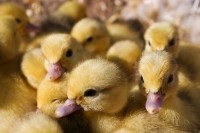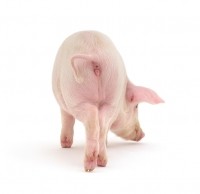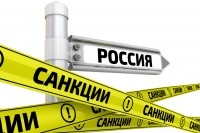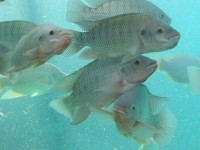2016 feed industry outlook

Richard Maatman, global marketing director at Trouw Nutrition, Nutreco's animal nutrition business, was the first off the blocks:
He said, for quite some time now, consolidation has been shaping the agribusiness landscape, and he predicted that on the production side, as farms grow in size and scope, so will the amount of vertically integrated operations. “With this trend, producers will continue to become more sophisticated and will increasingly bring their feed production in-house or develop a co-milling operation where they may not own the feed plant, but they ‘control’ the feed plant.
“While contract feed production may offer some regional opportunities, it will limit the market share for other independent feed manufacturers. This will further drive consolidation."
Regarding poultry, the broiler market will continue to grow, noted Maatman.
He said the EU is witnessing the growth of a new segment, that of slower growing broilers driven by specific consumer demands that have been fueled by discussions regarding animal welfare, initiated by NGOs.
“In the layer market another interesting trend can be witnessed, namely the ‘export’ of more welfare friendly production methods to the US and even Latin American market. This used to be purely an EU issue, but driven by large food service companies, and not by government and politics, this trend is emerging in these markets as well.
"Actually it is rather similar to what we are seeing in the area of antibiotic use reduction. This initially started off as an EU focused trend, but it is being taken on board by the large food companies in other regions of the world as well, which is driving change," he said.
The swine market, he continued, is where there are the biggest concerns. “The primary reason for that, especially in the EU, the second largest market in the world, is that nobody in the value chain is taking control of its direction. We miss vision and leadership in the pork value chain, something we have been clearly seeing in the dairy and poultry markets. The swine industry is struggling to innovate and develop new food concepts, and it lacks the orchestrator in the chain to produce these. It lags behind when it comes to creating new concepts that add value to the product. So, I’m not too optimistic when it comes to turning the tide."
In dairy, Maatman sees a temporary dip, primarily caused by a sudden increase in EU production due to the end of milk quotas, coupled with low Chinese demand and the Russian import ban. “It is a perfect storm at the moment, but the underlying fundamentals are good. I expect supply and demand to balance out in the second half of 2016, resulting in profitable margins again."
Looking at the key challenges when it comes to innovation, he reckons precision feeding as a concept remains very central: “Precision feeding has been around for some time, but with the introduction of big data we can enter a new era in this field. A key challenge for the sector will be to translate big data into meaningful new solutions. As an important side note, it will be interesting to see who will claim ownership of the data - similar to what we see in other industries.”
Andrew Knowles, marketing director, pigs at ForFarmers, agrees with Maatman that the difficulties the European pig sector experienced this year look set to continue into 2016.
He cites factors such as strong on-farm technical performance increasing pig meat production; a highly competitive retail sector fighting for market share and profitability through squeezing supply chain margins; static consumption trends as hard pressed consumers look to make their household budgets go further; and geopolitics restricting third country — Russia — market access: “The consequence is a pressure cooker of oversupply and weak demand for European pig meat."
Knowles said there will be some realignment of the European breeding herd — around 3% — as weaker businesses become unsustainable. “But the pig sector has developed resilience to these challenges. Historically low raw material prices, renewed emphasis on technical efficiency, and the development and exploitation of value adding supply chain initiatives provide opportunities for the sector to regain financial stability and sustainability in the year ahead,” he added.
Alexander Döring, secretary general of the European Feed Manufacturers’ Federation (FEFAC), said no major issues are expected next year as regards the supply of feed materials.
“The EU grain harvest was consistent in 2015, providing for adequate supplies, and there are no adverse signals regarding soybean harvests in North or South America, though the impact of El Niño remains uncertain,” he said.
The major priority at EU Farm Council level, continued Döring, is achieving further market stabilization of the dairy and pig meat markets, including a solution to the Russian phytosanitary bans and gaining market access to new export destinations.
At EU policy level, FEFAC hopes the Dutch presidency will make progress on the withdrawal of the Commission proposal to nationalize decisions on the use of GM food and feed, based on the European Parliament (EP) vote to reject the proposal. “Furthermore, we expect to see the conclusion of the legislative procedures for medicated feed and official controls in 2016 as well as support by the Council and EP for removing all feed materials from the scope of the waste framework directive, as part of the Circular Economy package just tabled by the EU Commission,” said Döring.
Alexandra de Athayde, executive director of the International Feed Industry Federation (IFIF) said the organization anticipates global feed production growth in 2016 of about 1 to 2%, moving closer to 1 billion tons of output, in line with the forecasted increase in animal protein production by the FAO.
“However this will vary widely by region, with significant feed production growth rates anticipated in Asia, Africa and Latin America. IFIF also anticipates that there will be continued growth for both existing and innovative specialty feed ingredients,” she said.
The UN’s Food and Agriculture Organization (FAO) said world meat production is anticipated to register a modest expansion in 2015 to 318.8 million tons representing potential growth of 1.1% moving into 2016.
The IFIF said the poultry sector is predicted to drive this global expansion, followed by swine, while only slight gains are foreseen for the beef, dairy and sheep sectors. Aquaculture continues to grow strongly with a 5% growth in 2015 to 78m tons, a momentum that will carry into 2016, it said.
“In 2015, global food markets were less volatile than in recent years, and foodstuff costs were well below their recent peaks. But looking ahead, the feed industry must continue to adopt financial risk tools in order to make any necessary rapid adjustments when faced with increasing commodity prices and market volatility,” said the IFIF executive director.
American Feed Industry Association (AFIA) president and CEO, Joel Newman, said 2016 will be a positive year for the US feed industry and its producer customers, as current commodity prices will keep the price of feed down within reasonable levels, based on both domestic and global grain supplies.
However, he said, as all poultry and livestock sectors are increasingly dependent on exports, the strong and increasing value of the US dollar will also have the potential to negatively affect global exports. This may dampen overall demand for meat, milk and eggs, and thus also feed demand.
“And, of course, a possible weather system shift from El Niño to La Niña during the 2016 crop year can change this stability in grain and feed prices pretty quickly,” said Newman.
But, looking beyond commodity prices, he said 2016 will be a challenging year for the US feed industry as it implements major regulatory requirements. The Food Safety Modernization Act (FSMA) is the most significant change in regulations of the US feed industry since the 1950s.
On top of this, the Veterinary Feed Directive (VFD) rule compliance dates overlap with FSMA, said Newman.
“While food safety and judicious use of antibiotics in animal production are priorities for the industry, these are significant new requirements that are being implemented at one time, and also require coordination with other parts of the food chain. AFIA is working diligently in providing the industry with guidance and training programs to ensure a practical approach to compliance with these regulations,” he added.
















